





Few perennials offer a full summer of bloom but in the right location and with the proper care, spiderworts can provide colour all season. The blooms may last only a day, but the display goes on and on.
(Editor's Note: This article was originally published on March 12, 2008. Your comments are welcome, but please be aware that authors of previously pubished articles may not be able to respond to your questions.)
The garden spiderworts are part of the genus Tradescantia, a genus containing some 50 or so species, all native to the Americas. Most are tender, trailing plants commonly grown as groundcovers in tropical areas or as houseplants in northern areas. There are a few hardy herbaceous spiderworts all native to the U.S., but most important from a gardening perspective is T. x andersoniana, a series of complex USDA zone 5 (zone 4 with protection) hybrids developed from T. ohiensis, T. virginiana and T. subaspera.
Most gardeners recognize spiderworts. They generally grow 45 to 60 cm in height, are somewhat leggy with narrow, strap-like leaves and terminal clusters of three-petaled flowers. The flowers are about 2.5 cm across and consists of three triangular petals and prominent fuzzy yellow stamens. The individual blossoms last only one day but are produced sequentially over a period of several weeks. They start blooming in early spring in the south but not until mid-summer in the north. In southern areas, plants can be cut back after blooming to provide a second flush later in the season.
The species are typically blue, but white and pink forms are known in the wild. It is from these colours, that all the modern hybrids have been developed. The palette now includes white, various shades of blue, lavender, purple, pink and magenta. Even the foliage can vary from bright yellow to purplish.
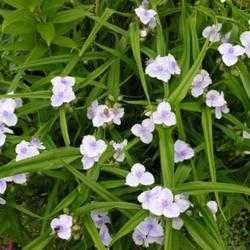
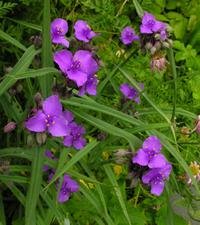
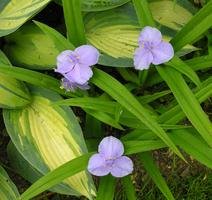
A variety of spiderworts illustrating their general growth form. From left to right is 'Osprey', 'Concord Grape' and 'Little Doll' growing among Hosta 'Janet'
Culture is quite easy. They seem to thrive in any well-drained soil, whether acidic or alkaline, clay or sandy. In the north, they bloom best in full sun but further south, shade from hot afternoon sun is recommended to prevent the leaf edges from burning. Individual plants are clump-forming and can regenerate from detached roots. They can be prolific self-seeders, so dead-heading is recommended to prevent unwanted volunteers.
It is only recently that I started growing spiderworts. A plant with one-day flowers did not provide much appeal in my opinion. However, I was given one plant as a gift so I had little choice but to keep it. Well, as it happened, I ended up being very impressed. The plant starting blooming in July and kept on blooming through September! That was enough to convince me of their merit. I now have 10 cultivars and am still looking for more. I have read that they can be invasive in southern areas but other than a few volunteer seedlings, they have been well-behaved in my USDA zone 5b garden.
The standard species are dark blue. Modern blue cultivars have larger flowers than the wild forms. I grow 'Zwanenberg Blue', but another similar cultivar is 'Blue Stone'. For slightly more purple tones, try 'Leonora' or 'Purple Dome'. For lighter lavender purple I grow 'J. C. Weguelin'. A shade lighter is 'Purple Profusion'. The best light blue is 'Iris Pritchard', a cultivar I am still trying to track down.
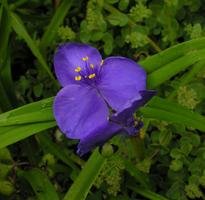
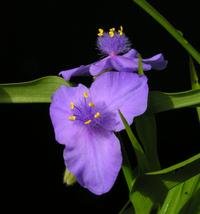
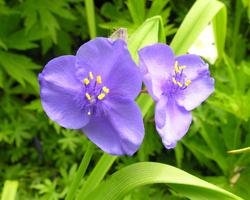
The cultivars 'Zwanenberg', 'J. C. Weguelin' and 'Leonora'
The oldest red cultivar (really reddish-pink) is 'Rubra' which has smallish flowers. The more modern version is 'Red Cloud' with flowers about 50% larger. Another similar cultivar is 'Carmine Glow'. For more pure pink, try ‘Valour', 'Pauline' or ‘Charlotte'.
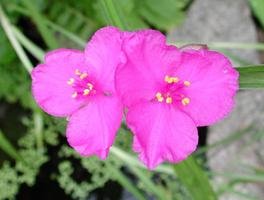
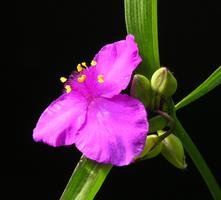
The cultivars 'Rubra' and 'Red Cloud'
The original white spiderwort was ‘Alba', again with relatively small flowers. 'Snow Cap' has much bigger flowers but the largest flowers of all spiderworts has to be 'Innocence'.
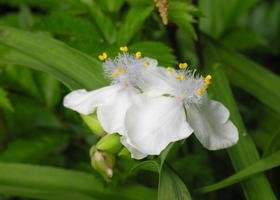
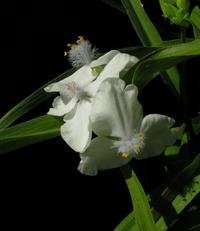
'Innocence', one of the largest flowered cultivars
Several newer cultivars have flowers in pastel shades. They are essentially white nicely tinted with blue, lavender or pink . These include 'Osprey' (tinted purple-blue), 'Bilberry Ice' (tinted lavender) or 'Pink Chablis' (tinted pink).
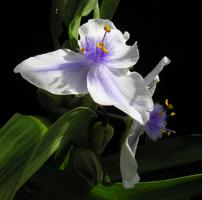
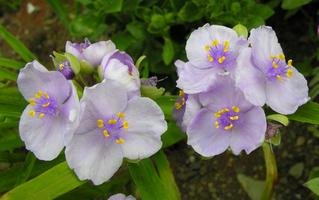
The cultivars 'Osprey' and 'Bilberry Ice'
There are three lovely dwarf spiderworts I can recommend, all which stay around 30 cm. They have finer foliage than the standard spiderworts. These include 'Satin Doll' (bright pink), 'Little Doll' (light lavender) and 'Little White Doll'.
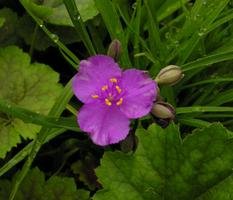

The miniature cultivars 'Satin Doll' and 'Little Doll'
If foliage is your preference, then its hard to beat ‘Blue and Gold', also known as ‘Sweet Kate'. This one has bright yellow foliage with contrasting deep blue flowers. Stunning! For a more subtle effect, try some of the cultivars with distinct blue-green foliage which include 'Concord Grape' (purple), 'Red Grape' (dark reddish-pink), 'Hawaiian Punch' (bright reddish-pink) or 'Perrine's Pink' (bright pink).

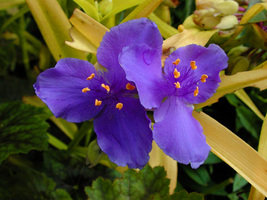
The cultivars 'Concord Grape' and 'Sweet Kate'
I expect more cultivars will be released over time. In my own garden, I am getting volunteer seedlings which are like none of the cultivars I currently own. I am keeping my eye on a light pink seedling which has great potential!
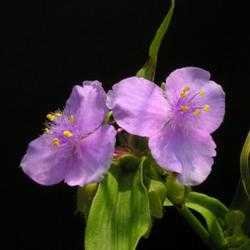
A self-seeded unnamed pink cultivar that arose in my garden
I have to admit that spiderworts don't put on a grand show like Rudbeckia, Asters or Phlox. However, their long blooming season is hard to beat in any perennial. Now that I have them, I don't know how I went without them for so long!
Copyright © www.100flowers.win Botanic Garden All Rights Reserved